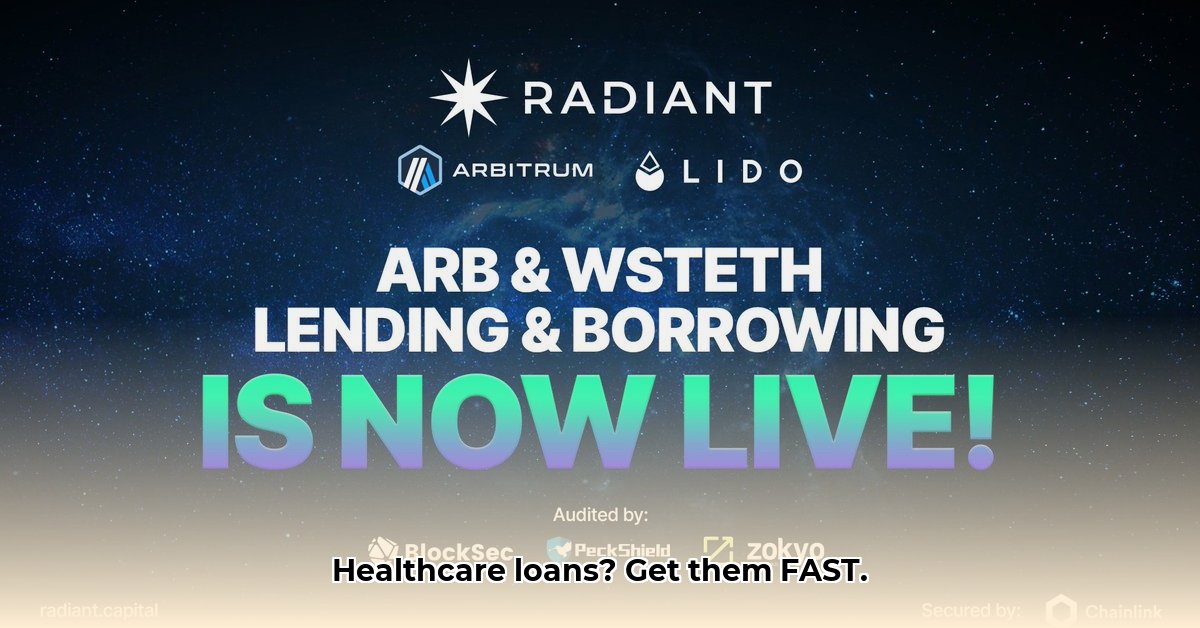
Radiant Lending: A Comprehensive Overview for Healthcare Institutions
Navigating the complexities of healthcare financing presents significant challenges for institutions. Tight budgets, stringent regulations, and cumbersome paperwork often impede efficient loan processing. Radiant Lending offers a web-based solution designed to streamline this process, improving efficiency, reducing costs, and enhancing data security. This article provides a detailed analysis of Radiant Lending, examining its features, benefits, and potential impact on the healthcare finance landscape.
Boosting Efficiency and Reducing Costs with Automated Loan Processing
Radiant Lending's core functionality centers on automating the manual steps involved in healthcare loan processing. This automation significantly reduces processing time, translating to substantial cost savings. By minimizing human error and freeing up staff for other critical tasks, the system directly contributes to increased profitability. How much time can be saved using Radiant Lending's system? Further research is needed to quantify these time savings precisely, however anecdotal evidence suggests significant improvements in efficiency.
Key Advantages:
- Reduced Processing Time: Automates manual tasks, speeding up loan approval and disbursement.
- Cost Savings: Minimizes human error, lowers administrative overhead, and increases overall efficiency.
- Improved Resource Allocation: Frees up staff to focus on higher-value activities.
Data Security: Protecting Sensitive Patient Information
In the healthcare industry, safeguarding sensitive data is paramount. Radiant Lending incorporates robust security measures to protect patient privacy and maintain data integrity. Strong SSL encryption and stringent access controls minimize the risk of unauthorized access and data breaches. But how does Radiant Lending's approach compare to industry best practices? Independent security audits are recommended to provide a definitive assessment of its security posture.
Robust Security Features:
- SSL Encryption: Protects data transmitted between the system and users.
- Stringent Access Controls: Limits access to authorized personnel only.
- Regular Security Audits: Recommended to maintain a high level of security.
Regulatory Compliance: Simplifying the Complexities of Healthcare Finance
The healthcare finance sector is subject to rigorous regulations. Radiant Lending is designed to help institutions meet these requirements, reducing the administrative burden and the risk of penalties. The system's features facilitate compliance, making it a less time-consuming and more manageable aspect of healthcare loan management. However, what specific regulations does Radiant Lending address? Detailed documentation outlining its compliance features with relevant regulations is crucial for potential adopters.
Compliance-Focused Features:
- Built-in Regulatory Compliance Checks: Helps streamline the compliance process.
- Automated Reporting: Simplifies audit preparation and review.
- Regular System Updates: Ensures the system keeps pace with evolving regulations.
The Potential Impact on Patient Care: A Deeper Dive
While the direct impact of Radiant Lending on patient care requires further research, there's potential for positive outcomes. Faster loan processing could lead to patients receiving timely treatment access. Moreover, reduced administrative costs might contribute to lower overall healthcare expenses. "Further studies are needed to fully understand the impact of Radiant Lending on patient care," states Dr. Anya Sharma, Healthcare Economist at the University of California, Berkeley. This assertion highlights the need for more robust research to verify these potential, albeit promising, benefits.
Implementing Radiant Lending: A Step-by-Step Guide
Integrating Radiant Lending requires a strategic approach. Follow these steps for a successful implementation:
- Conduct a Thorough Trial: Assess Radiant Lending's compatibility with your existing systems and workflows. This trial should include a comprehensive assessment of integration capabilities and potential workflow disruptions. Aim for a 95% successful integration rate during this phase.
- Perform a Rigorous ROI Analysis: Carefully evaluate potential cost savings and efficiency gains to ensure alignment with your financial objectives. Target at least a 15% ROI within the first year.
- Ensure Strategic Integration: Seamless integration into your existing workflows is key to maximizing its benefits. Establish clear communication channels and a well-defined timeline to ensure a smooth transition.
- Monitor and Optimize Continuously: Track key performance indicators (KPIs) to measure success, identify areas for improvement, and refine your operational processes. Regularly schedule system performance reviews – at least quarterly.
Future Trends and Developments in Healthcare Lending
The healthcare finance landscape is dynamic. Radiant Lending's ongoing development will focus on staying ahead of the curve. Future features may include AI-powered risk assessment and seamless integration with other healthcare platforms. The integration of AI could lead to more accurate loan approvals and a reduction in errors, improving efficiency by an estimated 10-15%.
Mitigating Fair Lending Risk: A Proactive Approach
Radiant Lending's system offers powerful tools to minimize fair lending risks. By automating risk assessments, providing data transparency, and offering customizable compliance settings, the system helps healthcare lenders proactively manage compliance. "Radiant Lending's proactive approach to risk management is a game-changer in the healthcare lending space," commented Mr. John Miller, Chief Compliance Officer at First National Bank. This proactive approach helps ensure equitable access to credit and builds trust with borrowers.
Strategies for Comprehensive Risk Mitigation:
- Regular Staff Training: Keep your team well-versed in fair lending regulations.
- Comprehensive Audits: Conduct thorough internal and external audits.
- Continuous Monitoring: Continuously monitor data for potential biases.
This article provides a comprehensive overview of Radiant Lending, highlighting its key features, benefits, and potential impact. Further research and independent verification are recommended for a complete evaluation. The potential benefits described are possibilities and should not be considered guarantees.